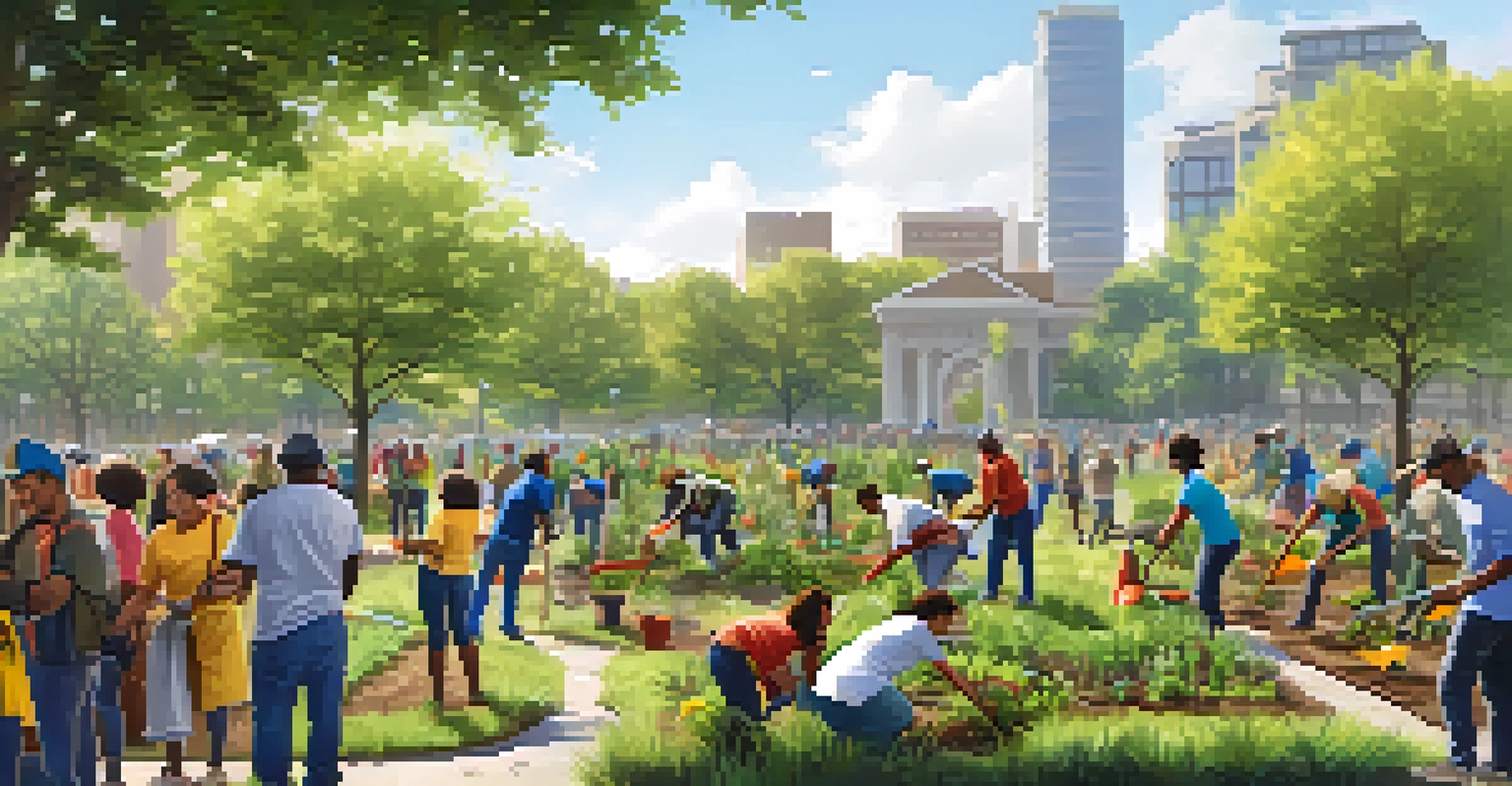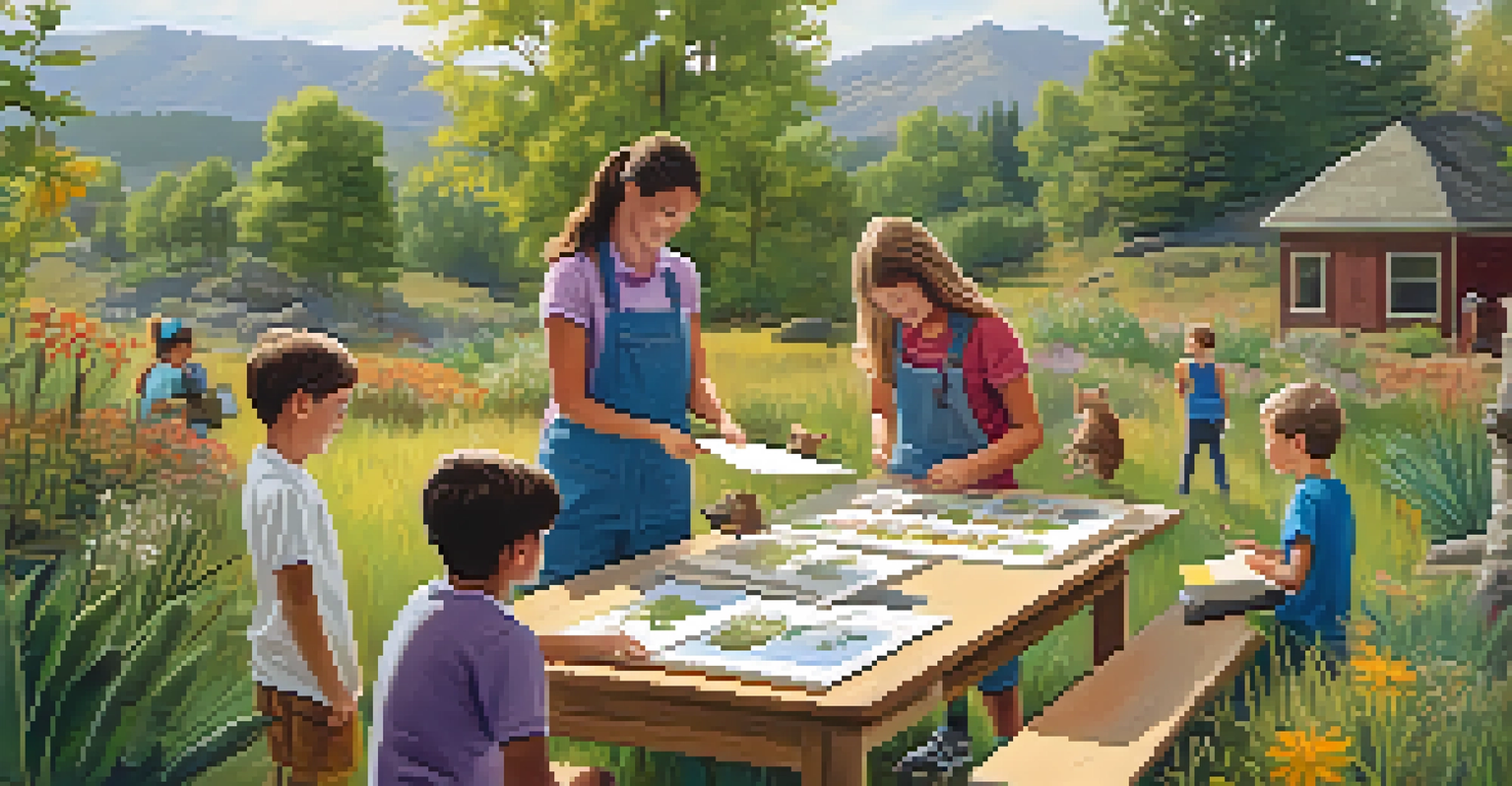Conservation Efforts in Illinois: Protecting Natural Resources

The Importance of Conservation in Illinois
Conservation plays a vital role in preserving Illinois' rich biodiversity and natural landscapes. With its diverse ecosystems ranging from forests to wetlands, protecting these areas is crucial for maintaining the balance of nature. This not only benefits wildlife but also enhances the quality of life for residents who enjoy outdoor activities and natural beauty.
In every walk with nature one receives far more than he seeks.
Illinois is home to several endangered species, and conservation efforts aim to safeguard these animals and their habitats. Initiatives focus on restoring native plants and controlling invasive species, which threaten the delicate ecological balance. By protecting these species, we ensure that future generations can also experience the state's natural wonders.
Moreover, conservation helps in managing natural resources effectively, ensuring that they are available for sustainable use. This involves practices like responsible land management and water resource conservation, which are essential for agriculture and urban development. Ultimately, these efforts support not just the environment, but also the economy.
Key Organizations Driving Conservation Efforts
Numerous organizations are dedicated to conservation in Illinois, each playing a unique role in protecting the environment. For instance, the Illinois Department of Natural Resources (IDNR) manages state parks and wildlife areas, promoting responsible recreation while conserving habitats. Their initiatives often involve community engagement to foster a sense of stewardship among residents.

Additionally, nonprofit organizations like the Nature Conservancy work tirelessly to preserve critical lands and waters. They focus on acquiring and restoring habitats, ensuring that ecosystems remain resilient against climate change and urban development. By collaborating with local communities, they help raise awareness and support for conservation initiatives.
Conservation Preserves Biodiversity
Conservation efforts in Illinois are essential for protecting diverse ecosystems and ensuring the survival of endangered species.
Volunteer programs also play a significant part in these efforts, allowing individuals to contribute directly to conservation projects. Whether it’s planting trees, cleaning rivers, or monitoring wildlife, these hands-on activities foster a deeper connection to nature. This community involvement not only aids conservation but also cultivates environmental ambassadors.
Restoration Projects in Illinois
Restoration projects are essential for reviving degraded ecosystems across Illinois. One notable initiative is the restoration of the prairie, which was once a dominant landscape in the region. Programs aimed at re-establishing native grasses and flowers not only enhance biodiversity but also provide critical habitat for pollinators and other wildlife.
The environment is where we all meet; where we all have a mutual interest; it is the one thing all of us share.
Wetland restoration is another key focus area, as these ecosystems play a crucial role in water filtration and flood control. By restoring wetlands, Illinois is not only protecting its water resources but also creating habitats for numerous species. These projects often involve collaboration between governmental agencies and local communities, ensuring that restoration efforts are both effective and sustainable.
Moreover, urban areas are also seeing restoration efforts, with green spaces being revitalized to improve both biodiversity and community well-being. These projects transform vacant lots into vibrant parks, offering residents a chance to connect with nature within their own neighborhoods. Such initiatives highlight the importance of integrating conservation into urban planning.
The Role of Education in Conservation
Education is a cornerstone of effective conservation strategies in Illinois. Schools and organizations offer programs aimed at teaching students about local ecosystems and the importance of environmental stewardship. Through hands-on experiences like field trips and conservation workshops, students gain a deeper appreciation for nature.
Moreover, public awareness campaigns help inform residents about conservation practices they can adopt in their daily lives. Simple actions like reducing waste, conserving water, and participating in local clean-up days can have a significant impact. By encouraging community involvement, these initiatives foster a culture of conservation that benefits everyone.
Community Involvement Drives Change
Active participation from local residents in conservation initiatives fosters a sense of ownership and strengthens community ties.
Additionally, social media platforms are increasingly utilized to spread awareness and engage younger audiences. This digital outreach allows organizations to share success stories, promote events, and educate the public about urgent environmental issues. By harnessing technology, conservation messages can reach a wider audience, inspiring action across the state.
Legislation Supporting Conservation Initiatives
Legislation plays a critical role in shaping conservation efforts in Illinois. Laws aimed at protecting endangered species, regulating land use, and promoting sustainable practices are essential for effective conservation. These legal frameworks help ensure that natural resources are used responsibly and that ecosystems are preserved for future generations.
One significant piece of legislation is the Illinois Endangered Species Protection Act, which provides guidelines for the protection of threatened and endangered species. It emphasizes the importance of habitat conservation and restoration, ensuring that vulnerable species have a fighting chance. Such laws not only protect wildlife but also recognize the interconnectedness of all living things.
Moreover, funding from state and federal programs supports various conservation initiatives. Grants and incentives encourage landowners to adopt sustainable practices and engage in habitat restoration projects. This financial backing is crucial for implementing large-scale conservation strategies that can effectively address environmental challenges.
Community Involvement in Conservation
Community involvement is at the heart of successful conservation efforts in Illinois. Local residents are often the first line of defense in protecting natural resources, whether through volunteer work or advocacy. Engaging the community fosters a sense of ownership and responsibility towards local ecosystems, which is vital for long-term sustainability.
Many communities host conservation events, such as tree planting days or clean-up initiatives, where residents can actively participate in preserving their environment. These events not only enhance local habitats but also strengthen community bonds. When people come together for a common cause, it creates a shared commitment to protecting nature.
Education Fuels Conservation Awareness
Educational programs and public awareness campaigns are vital for inspiring individuals to adopt sustainable practices and engage in conservation.
Furthermore, grassroots organizations often emerge to address specific local environmental issues. These groups rally support for projects that benefit both wildlife and community members, such as creating community gardens or preserving green spaces. This local activism is essential for driving change and ensuring that conservation efforts resonate with the needs of the community.
The Future of Conservation in Illinois
Looking ahead, the future of conservation in Illinois hinges on continued collaboration and innovation. As environmental challenges evolve, so too must our strategies for addressing them. Embracing new technologies, such as remote sensing and data analytics, can enhance conservation efforts by providing critical insights into ecosystem health.
Moreover, ongoing education and awareness campaigns will be essential for maintaining community engagement. As more people understand the importance of conservation, they are more likely to take action and support local initiatives. This collective effort can lead to more effective, sustainable practices that benefit both people and the environment.

Ultimately, the success of conservation in Illinois will depend on the commitment of individuals, organizations, and policymakers alike. By working together and prioritizing the health of our natural resources, we can ensure that Illinois remains a thriving home for wildlife and a beautiful place for future generations to enjoy.